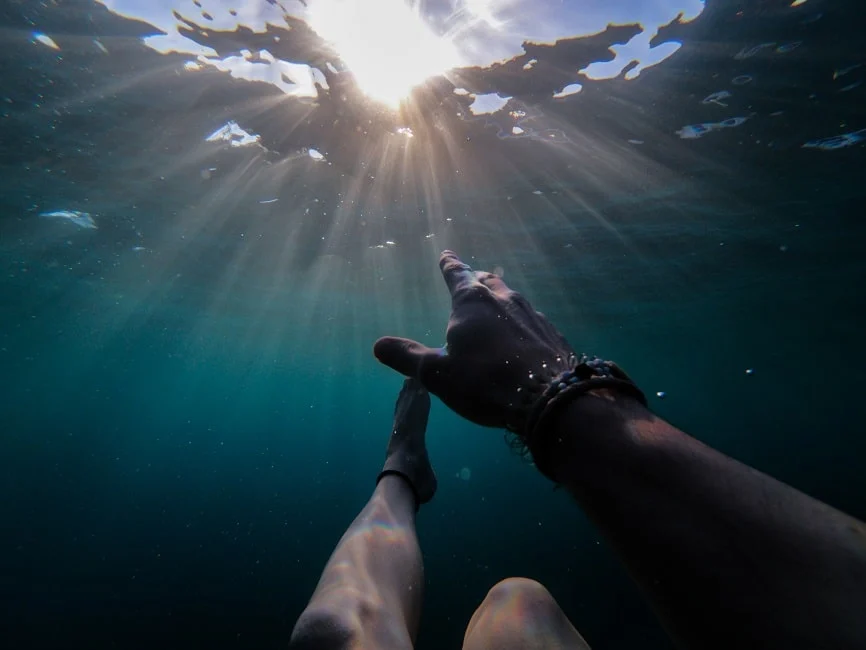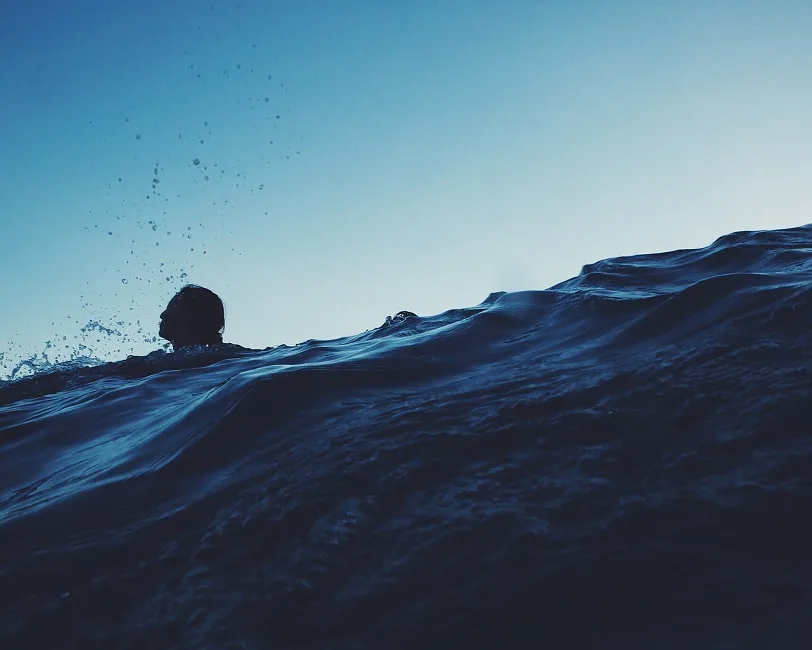
As a Pacific Northwest boater, I’ve always made it a priority to wear a lifejacket and avoid falling in, but I’ve never spent much time thinking about what I would do if I did fall in – until recently. At the 2019 NASBLA conference in Anchorage, Alaska, where US Coast Guard and boating law administrators gather to discuss safety on the water (among other things), I had the opportunity to hear Mike Tipton, Professor of Human and Applied Physiology at the University of Portsmouth, give a talk on the latest science surrounding cold water survival. Here are some of the surprising things I learned:
You can’t hold your breath.
When you first hit cold water (15°C / 59°F or lower) you have what is known as a cold shock response that lasts for about 2 minutes. Your heart rate, breath rate, and breath volume spike dramatically, making it impossible to hold your breath. According to Tipton, “The cutaneous cold receptor is .18 mm below the surface of the skin and that drives the cardio respiratory response which…destroys your ability to breath hold.” The instinct to gasp is uncontrollable and deadly. “The lethal dose for drowning in saltwater is about 1.5 L,” said Tipton, “The gasp I get when I got into cold water is between 2-3 L. I’ve already crossed the lethal dose for drowning if I happen to be under the water or if I happen to have waves breaking over my airway.”
If you ever experience cold shock, you’ll hopefully be wearing a lifejacket (ideally with a splashguard) which will help to keep your head above the surface. But what if you’re not wearing a life jacket? What if you had no intention of going boating, but were just checking your dock lines at the marina, and you accidentally fall in? “We absolutely emphasize lifejackets but we also have to give people a method for surviving if they don’t wear a lifejacket,” said Tipton. If you fall into cold water and are not wearing a lifejacket, “our number one objective on immersion, in those first couple of minutes, is to keep the airway clear of the water. Hold onto something and if you can’t do that, then float,” said Tipton.
You muscle function will rapidly decline
Once you’ve survived the cold shock response you’ve got another issue. “Superficial nerves and muscles are cooling, particularly in the arms,” said Tipton. Arms are especially susceptible to cooling because they have a high surface area to mass ratio. Tipton explained that once the muscles have cooled to 27°C (81°F), muscle function becomes significantly impaired, making it incredibly difficult, if not impossible to do simple tasks like removing packaging from a flare.
Exercising in cold water may make the situation worse.
“If you exercise in cold water (water below 25°C) you cool more quickly than if you stay still.” Tipton’s advice, should you find yourself in this situation? “Be aware, stay still, and after the cold shock you’ve got about 10-20 minutes to do all the things you need to do to get into long term survival mode.”
But what if you can’t stay still? “Sometimes you’ve got to do something,” said Tipton, “If you’ve got to do something, do leg-only exercise. Leg-only exercise keeps you as warm if not slightly warmer than whole body exercise. The really nasty part of the body that you want to avoid exercising is the arms. There’s an enormous amount of heat that is lost through the arms when you start exercising. When you don’t exercise them, they’ll help insulate the torso.” Tipton explained that most heat loss in cold water is from the back of the torso, where your garments are compressed, “So if you’ve got to exercise in cold water, leg-only exercise is the way to go.”

Knowing about cold shock can help you survive it
“If you know about [cold shock], it helps,” said Tipton. “We’ve tested people who didn’t know, and they go from cold shock to panic because they think that’s the way it’s going to be for the next hour.“ According to Tipton a little bit of knowledge and education goes a long way, “If you know that you’re going to have a cold shock response, but it’s going to go away in about a minute or a minute and a half. You have a completely different mind set.”
The human body can habituate to cold shock
In a controlled research setting (i.e. this is not something to be tried at home), Tipton found that with “repeated immersions in cold water you can very significantly habituate the cold shock response. In as few as six 3-minute immersions over the course of a day, we’ve halved the [cold shock] response. 14 months later it’s still reduced by 25%.”
Side note: If you want further proof of the body’s ability to habituate to the cold, check out 57-year old dutchman, Wim Hof (aka Ice Man) who has climbed Mt. Everest in only shorts and running shoes and run a marathon barefoot above the Arctic Circle. The method behind his madness? Breathing exercises, cold showers, and ice baths.
While I probably won’t be taking an ice bath anytime soon, knowing a bit more about cold water survival is reassuring.
For more on Tipton and his work, see the University of Portsmouth website. In addition to publishing over 600 scientific papers, reports, and chapters, Tipton has also authored a couple of books including the Essentials of Sea Survival.
Fiona McGlynn is an award-winning boating writer who created Waterborne as a place to learn about living aboard and traveling the world by sailboat. She has written for boating magazines including BoatUS, SAIL, Cruising World, and Good Old Boat. She’s also a contributing editor at Good Old Boat and BoatUS Magazine. In 2017, Fiona and her husband completed a 3-year, 13,000-mile voyage from Vancouver to Mexico to Australia on their 35-foot sailboat.
